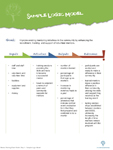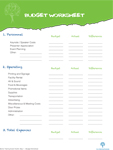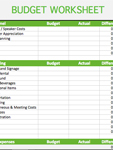Step 1: Planning
Establish Your Team – who should be at the table?
A strong planning committee offers a number of benefits, including:
- shared responsibility and ownership in success,
- a variety of creative ideas
- multiple networks to be drawn on when recruiting attendees.
- Providing leadership and guidance about the event goals and design, and,
- creating and strengthening connections to community organizations and stakeholders that can make the event a success.
Start by identifying groups you anticipate will be involved in the event (both partners and participants), and ensure each is represented, or given an opportunity to be represented, on the committee.
Where appropriate, include representatives from:
- schools / school boards (make sure that a school principal or other key administrator is involved in your planning; their buy-in is critical to ensuring that other school personnel are supportive and committed once the program is underway)
- community partners
- mentoring agency staff (e.g. BBBS, FCSS)
- government
- funding agencies
- student or youth groups
- meet weekly to discuss planning and task progression
- conference calls or online meetings are a great way to coordinate physically disparate groups
- set agendas for each meeting to keep the group on-task
- keep meeting minutes to record discussions and action points
- review minutes at the beginning of each meeting to evaluate and track progress
Get Organized – who is doing what?
Map out the roles and responsibilities of each organization or individual early in the planning process. Will they be involved solely in planning, as speakers or presenters, obtaining funding, coordinating sessions, involved in set-up and tear-down, or some combination of these? Establishing clear expectations early solidifies commitment and prevents miscommunication later.
Identify Your Goals - what are you trying to accomplish?
Intentional planning helps you select the most effective activities and predict potential problems, as well as to stay focused on what you want to accomplish.
Begin by identifying the long-term changes you want to achieve. It is important to think through and clearly articulate your goals to ensure you are taking the right steps to accomplish them!
- use this Logic Model Template to guide your planning process
- check out the Sample Logic Model for examples to help you get started.
Work backwards from your goal, identify your:
outcomes - long-term changes or benefits that are the intended result of holding a mentor-training event.
Examples include:
- establishing new mentoring initiatives and partnerships through networking and relationship building efforts
- increase receptivity to committing time and resources by demonstrating to stakeholders (e.g. schools and school boards) the first-hand benefits that mentoring offers (both in the role of mentor and mentee)
- strengthening community relationships to open doors for future endeavours
- increase awareness of the value of mentoring and opportunities available in the community
outputs – immediate tangible benefits or direct results of the event activities
- these measures or indicators are generally measurable, and used to gauge the probability of the desired outcomes coming to pass
activities - describe what you will do with the resources you have.
inputs - resources available to put into the event
- establish a budget early to guide your planning activities but remember to leave some breathing room for unanticipated costs that will inevitably arise
- the budget worksheet (and Excel Spreadsheet outline most of the event hosting costs you can expect to incur – use these to get started!




